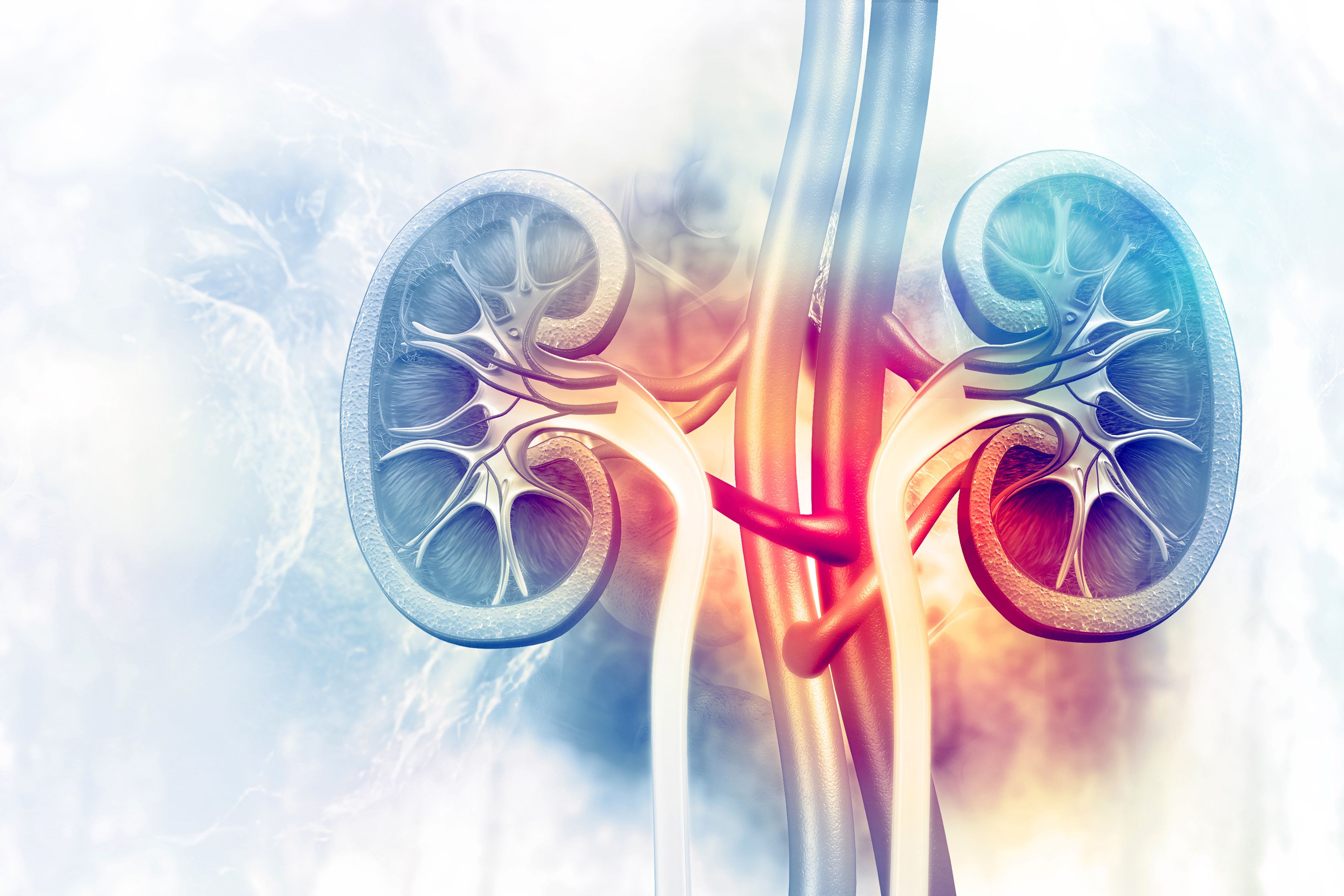Article
FDA Approves Polatuzumab Vedotin Plus R-CHP for Previously Untreated DLBCL
Author(s):
The FDA has approved polatuzumab vedotin-piiq plus rituximab, cyclophosphamide, doxorubicin, and prednisone (R-CHP) for certain patients with treatment-naive diffuse large B-cell lymphoma.
This article originally appeared on OncLive. This version has been lightly edited.
The FDA has approved polatuzumab vedotin-piiq (Polivy) plus rituximab (Rituxan), cyclophosphamide, doxorubicin, and prednisone (R-CHP) for use in adult patients who have previously untreated diffuse large B-cell lymphoma (DLBCL), not otherwise specified (NOS) or high-grade B-cell lymphoma (HGBL) and who have an International Prognostic Index score of two or greater.1
The regulatory decision converts the June 2019 accelerated approval of the antibody-drug conjugate (ADC) in combination with bendamustine and rituximab (BR) for the treatment of patients with relapsed or refractory DLBCL who have previously received at least 2 therapies into a regular one.2 This approval was based on data from the phase 1b/2 GO29365 trial (NCT02257567), in which 40% of patients receiving the polatuzumab vedotin regimen achieved complete response (CR) compared with 18% of patients in the BR-alone arm, meeting the primary end point of the study.
The frontline approval is supported by findings from the phase 3 POLARIX trial (NCT03274492), in which polatuzumab vedotin plus R-CHP (n = 440) significantly improved progression-free survival (PFS) compared with rituximab, cyclophosphamide, doxorubicin, vincristine, and prednisone (R-CHOP; n = 439) in this patient population.3
The addition of the ADC to R-CHP resulted in a 27% reduction in the risk of disease progression, relapse or death vs R-CHOP (HR, 0.73; 95% CI, 0.57-0.95; P < .02). Data presented at the 2022 Pan Pacific Lymphoma Conference showed that the 2-year PFS rate in the investigative arm was 76.7% (95% CI, 72.7%-80.8%) vs 70.2% in the control arm (95% CI, 65.8%-74.6%).
“It has been nearly 20 years since a new treatment option has become available to people newly diagnosed with diffuse large B-cell lymphoma,” Levi Garraway, MD, PhD, chief medical officer and head of global product development at Roche, stated in a news release. “Today’s decision from the FDA to approve Polivy in combination with R-CHP in this setting brings a much-needed new treatment option which may improve outcomes and bring other benefits to many patients with this aggressive lymphoma.”
The international, randomized, double-blind, placebo-controlled POLARIX enrolled patients with previously untreated LBCL, an International Prognostic Index score between 2 and 5 representing low-intermediate to high-risk disease, no central nervous system disease, and no primary mediastinal large B-cell lymphoma.4
The trial included patients with several types of LBCL, including DLBCL NOS, HBCL with MYC and BCL2 and/or BCL6 rearrangements, HGBL NOS, and other low-grade B-cell lymphomas, including T-cell/histiocyte-rich LBCL, Epstein–Barr virus–positive DLBCL, ALK-positive LBCL, and HHV8-positive DLBCL.
Participants were randomly assigned 1:1 to receive either 1.8 mg/kg of polatuzumab vedotin once daily plus 375 mg/m2 of rituximab, 750 mg/m2 of cyclophosphamide, and 50 mg/m2 of doxorubicin for six 21-day cycles; or standard-of-care R-CHOP. All patients received 375 mg/m2 of rituximab daily for cycles 7 and 8.
Investigator-assessed PFS served as the trial's primary end point. Key secondary end points comprised event-free survival (EFS), end-of-treatment PET-CT CR rate, disease-free survival (DFS), overall survival (OS), and safety.
Additional data showed that the hazard ratio for EFS with polatuzumab vedotin plus R-CHP vs R-CHOP was 0.75 (95% CI, 0.58-0.96; P = .02). No significant difference between PET-CR rate at end of treatment was observed (78.0% vs 74.0%; P =.16), although DFS data suggested that responses are more durable with the polatuzumab vedotin combination (HR, 0.70; 95% CI, 0.50-0.98).
No significant difference in OS was observed between the treatment arms (HR, 0.94; 95% CI, 0.65-1.37; P = 0.75). At a median follow-up of 39.7 months, the median OS was not reached in either arm. At 2 years, the OS rate was 88.7% in both arms.
The toxicity profile of polatuzumab vedotin plus R-CHP proved to be comparable to that of R-CHOP.1 Grade 3 or 4 adverse effects (AEs) were experienced by 57.7% of those on the investigative arm and 57.5% of those on the control arm; serious AEs occurred in 34.0% and 30.6% of patients, respectively. Mroeover, grade 5 toxicities were reported in 3.0% of those in the ADC arm vs 2.3% of those in the placebo arm. Toxicities resulted in dose reductions for 9.2% of those who received polatuzumab vedotin and 13.0% of those who did not.
The most commonly reported toxicities included peripheral neuropathy, nausea, fatigue, diarrhoea, constipation, alopecia, and mucositis. Lymphopenia and neutropenia were the most commonly experienced grade 3 or 4 AEs.
The frontline regulatory approval follows the FDA's Oncologic Drugs Advisory Committee vote of 11 to 2 in March 2023 that data from POLARIX support a favorable benefit-risk profile for polatuzumab vedotin in this population.5
References
- [Ad hoc announcement pursuant to Art. 53 LR] FDA approves Roche’s Polivy in combination with R-CHP for people with certain types of previously untreated diffuse large B-cell lymphoma. News release. Roche. April 19, 2023. Accessed April 19, 2023. https://www.roche.com/media/releases/med-cor-2023-04-19
- FDA approves polatuzumab vedotin-piiq for diffuse large B-cell lymphoma. FDA. June 10, 2019. Accessed April 19, 2023. https://www.fda.gov/drugs/resources-information-approved-drugs/fda-approves-polatuzumab-vedotin-piiq-diffuse-large-b-cell-lymphoma
- Mehta-Shah N, Tilly H, Morschhauser F, et al. Polatuzumab vedotin plus rituximab, cyclophosphamide, doxorubicin, and prednisone (Pola-R-CHP) versus rituximab, cyclophosphamide, doxorubicin, vincristine and prednisone (R-CHOP) therapy in patients with previously untreated diffuse large B-cell lymphoma (DLBCL): results from the phase III POLARIX study. Presented at: 2022 Pan Pacific Lymphoma Conference; July 18-22, 2022; Koloa, HI. https://f5cb18b31bcff05c4c68-a0ad32938c5dd185096ff3214cd552d4.ssl.cf1.rackcdn.com/2089833-1655492027.pdf
- A study comparing the efficacy and safety of polatuzumab vedotin with rituximab-cyclophosphamide, doxorubicin, and prednisone (R-CHP) versus rituximab-cyclophosphamide, doxorubicin, vincristine, and prednisone (R-CHOP) in participants with diffuse large B-cell lymphoma (POLARIX). ClinicalTrials.gov. Updated May 31, 2022. Accessed April 19, 2023. https://clinicaltrials.gov/ct2/show/NCT03274492
- Meeting of the Oncologic Drugs Advisory Committee (ODAC). Youtube. March 9, 2023. Accessed April 19, 2023. https://www.youtube.com/watch?v=zCf87ABhqpU




